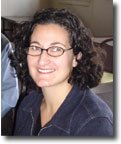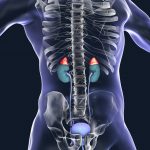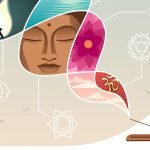RELAX! Applying Mind-Body Medicine to Breast Cancer
Heather Zwickey, PhD
Helané Wahbeh, ND
Naturopathic practitioners often include mind-body components in their treatment plans. Mind-body medicine is used to alleviate stress, set an intention for optimal health, and empower patients. There are many types of mind-body therapies, including relaxation, hypnosis, visual imagery, meditation, yoga, biofeedback, tai chi, qi gong, cognitive-behavioral therapies, group support, autogenic training, spirituality, and mindfulness-based stress reduction. At the Helfgott Research Institute at the National College of Naturopathic Medicine, we have focused on the application of Relaxation and Visualization Therapy (RVT) to breast cancer patients.
Relaxation and Visualization Therapy
RVT is a widely used form of mind-body therapy. Psychologists and popular culture leaders such as Dale Carnegie (www.dalecarnegie.com), Robert Schuller (www.crystalcathedral.org), and Steven Covey (www.franklincovey.com) have used alternative forms of visualization therapy for many years, usually to affect an external result such as improvement in sports, leadership training, and possibility thinking. A classic study by Australian psychologist Alan Richardson, for example, used guided imagery to help athletes score baskets in basketball. Participants were randomized to either practice shooting free throws, use guided imagery where they imagined shooting and making free throws, or practice no basketball. At the end of 20 days, the participants who had imagined shooting free throws improved 23% versus the 24% improvement in the group that practiced every day. The group with no basketball had no improvement (Richardson, 1967). Mental images are thought to be an extension of our reality, an inner subjective reality. These mental expressions are then translated into psychosomatic changes (Epstein, 1990). While most psychological guided imagery focuses on visualizing the successful completion of external events like sport success, RVT involves visualizing and modulating internal physiological processes.
RVT includes a relaxation period followed by guided imagery in which the patient creates a mental image of the desired objective or result, allowing the patient to be an active part of the treatment (Simonton and Simonton, 1975; Gawain, 2002). Studies by our group and others have suggested that RVT may relieve stress, anxiety, depression, and fatigue. Although the mechanism of action is largely unknown, there is evidence to suggest that mind-body therapies including RVT may modulate the immune, endocrine, and nervous systems.
The first part of RVT involves relaxation. Relaxation is well understood to positively affect the body by decreasing the stress response. Stress-related activation of the hypothalamic-pituitary-adrenal (HPA) and sympathetic systems is associated with increased circulation of glucocorticoids (cortisol) and catecholamines (epinephrine and norepinephrine) (McEwen, 1998). Glucocorticoids impair cell-mediated immunity. This steroid-induced inhibition of immune activity is related to the suppressive effects of glucocorticoids at the level of transcription or the inhibition of cytokine synthesis by leukocytes (Auphan et al., 1995). Thus, either through direct action or through the inhibition of cytokine release, glucocorticoids are able to suppress lymphocyte proliferation, antibody formation, and natural killer cell activity (Sapolsky et al., 2000). Because it attenuates stress, relaxation also affects the endocrine and nervous systems, which in turn affect the immune system.
The guided imagery portion of RVT is designed specifically for the patient’s imagination (mind) to have an effect on a physiological system (body). The working definition of imagery developed by consensus is: “Imagery, a mental function, is a lived experience that is a dynamic, quasi-real, psychophysiological process” (Menzies and Gill Taylor, 2004). Because imagination is a cognitive process that evokes and uses human senses, it is a link between perception, emotion, and corporal changes (Achterberg, 1996). Thus, images generated during the therapy may produce internal reactions similar to physical stimuli. EEG studies have demonstrated that identical brain areas are stimulated during imagery and real life action. For example, if a subject moves his or her right hand in a certain way, then imagines moving that same right hand in the same way, the oscillations in the sensorimotor areas of the brain are identical (Pfurtscheller, 1999). This may explain why basketball players who visualize making baskets in their mind actually improve. But how does this apply to a patient population?
Breast Cancer and RVT
Breast cancer is the second leading cause of cancer deaths in women today and has surpassed lung cancer to become the most common cancer among women according to the American Cancer Society. According to the World Health Organization, more than 1.2 million people will be diagnosed with breast cancer this year worldwide. The emotional stress of being diagnosed with breast cancer is profound. The confrontation with a life-threatening disease evokes fear, anxiety, and depression.
An extraordinarily high number of women diagnosed with breast cancer undergo radiotherapy. Women referred for radiotherapy treatment after surgery often report being “frightened and anxious” before their first appointment. Women often express anxiety at having to be tattooed for radiotherapy. They feel like they are branded as cancer patients alienating them from the rest of society. Physically, women experience painful skin reactions, sensitive skin areas, armpit discomfort, and overwhelming fatigue and exhaustion (Popp and Sauer, 1988; Munro and Potter, 1996; Rahn et al., 1998; Dilhuydy et al., 2002; Faller et al., 2003; Sehlen et al., 2003; Weiss, 2004).
Among the various interventional mind-body possibilities, RVT may be the most promising for breast cancer patients. Through guided imagery, RVT encourages women to visualize the healing of the breast tissue. RVT has been demonstrated to improve fatigue (Jereczek-Fossa et al., 2002), reduce severe side effects and psychological distress during cancer treatment (Luebbert et al., 2001), and increase comfort of women with early-stage breast cancer undergoing radiotherapy (Kolcaba and Fox, 1999). In addition, RVT has contributed to improvements in stress, anxiety, mood, and quality of life in breast cancer patients (Walker et al., 1999; Baider et al., 2001; Carlson et al., 2001; Bakke et al., 2002; Targ and Levine, 2002; Carlson et al., 2003; Shapiro et al., 2003; Carlson et al., 2004). A systematic review of relaxation and guided imagery as an adjunctive cancer therapy determined significant benefits in certain cancer-related symptoms and states that further research is warranted (Roffe et al., 2005). In fact, one researcher recommends relaxation training routinely in acute cancer treatment because of the positive results of this intervention in their study (Luebbert et al., 2001).
Physiological Effects of RVT
The beneficial effects of RVT on breast cancer patients could be either direct or indirect. RVT could have a direct effect on the tumor cells, or RVT could have an effect on the tumor by modulating the immune response to the tumor. The direct action of RVT on tumor cells is difficult to study in the case of breast cancer because most tumors are removed by surgery quickly after diagnosis. There is one study of guided imagery combined with Chinese medicine and body therapy that demonstrated a reduction or cessation of growth of fibroid tumor in 22 out of 37 participants. Only 3 of 37 in the comparative group exhibited a similar response (Mehl-Madrona, 2002). Studies assessing whether RVT alone can “shrink or kill a breast tumor” elicit ethical issues in treatments.
However, the possibility that RVT can influence the immune response is easier to observe in a study. Many studies have demonstrated that RVT modulates immune response (Jasnoski and Kugler, 1987; Gruber et al., 1988; Zachariae et al., 1990; Hall et al., 1992; Gruber et al., 1993; Zachariae et al., 1994; Gruzelier et al., 2001; Bakke et al., 2002; Gruzelier, 2002), and a few studies demonstrate the activation of immunity during breast cancer. The immune response is acutely sensitive to the endocrine system, particularly the HPA axis. RVT has also been shown to modulate endocrine effects in breast cancer patients. Imagination may then be considered an important instrument to modulate immune and endocrine responses.
Because RVT involves the mind, it is expected that RVT would have an effect on neurotransmitters. Similar to the endocrine system, neurotransmitters can affect the immune response to a tumor. Currently, the effect of RVT on neurotransmitters is unknown. However, there is evidence to suggest that other mind-body therapies can influence neurotransmitters. Meditation, similar to RVT, is known to decrease epinephrine and norepinephrine (Bujatti and Riederer, 1976; Cooper et al., 1985; Delmonte, 1985; Morrell and Hollandsworth, 1986; Elias and Wilson, 1995; Infante et al., 2001). Norepinephrine and epinephrine, associated with stress and anxiety, are immunosuppressive, inhibiting reactive oxygen species, antigen presentation, and the secretion of cytokines TNFα and IFNγ (Malarkey et al., 2002; Torres et al., 2005). Thus, these neurotransmitters would have a negative effect on the immune response to a tumor.
There is clear evidence for a modulatory role of neurotransmitters on immune function as well as in the migration of tumor cells (Entschladen et al., 2002). More than 90% of deaths from cancer are not from the primary tumor but from development of metastases (Entschladen et al., 2004). Recent studies have demonstrated a stimulatory effect on the migration of the breast cancer cells with dopamine, and norepinephrine. In contrast, gamma-aminobutyric acid (GABA) has an inhibitory effect on migration of cancer cells (Drell et al., 2003). Both GABA-nergic and dopaminergic systems have been purported to affect both oncogenesis and inhibition of migration (Gilbert, 1997; Mazurkiewicz et al., 1999; Opolski et al., 2000; Szczaurska et al., 2003).
RVT and similar therapies have been shown to beneficially affect the immune and endocrine system in breast cancer patients. To date, modest, small-scale, largely preliminary studies have begun to characterize RVT (Gruzelier, 2002). Because of its excellent treatment potential, accessibility, and affordability, and the lack of understanding of its mechanism, most authors call for more rigorous studies to further investigate the mechanism and efficacy of the therapy in this population (Jereczek-Fossa et al., 2002; Roffe et al., 2005)
Vis Medicatrix Naturae
Ultimately, mind-body therapies are aligned with the first principle of naturopathic philosophy. They support the body’s innate ability to heal. There is increasing evidence to suggest that mind-body therapies like RVT are strongly able to influence the immune system, endocrine system, and nervous system. We at the Helfgott Research Institute are committed to studying psychoneuroimmunology and the effects of mind-body medicine on health.

Helané Wahbeh, ND is a postdoctoral research fellow at the Helfgott Research Institute. Her research interests are in psychoneuroimmunology and energetic medicine. She is currently working on the following: EEG, psychological, and physiological effects of binaural beat technology; the naturopathic antiinflammatory diet’s effect on mood; mindfulness-based cognitive therapy for veterans with PTSD; and validation studies for neurotransmitter assessment through urine. Dr. Wahbeh’s background is in public health and Alzheimer’s disease research. She graduated from the National College of Naturopathic Medicine.
 Heather Zwickey, PhD is the director of Helfgott Research Institute (Helfgott) and Assistant Professor of Immunology, trained at the world renowned National Jewish Medical and Research Center in Denver. She received a Ph.D. in Immunology and Microbiology while studying how antigen is presented by the non-classical MHC class I antigen processing pathway during infection. Dr. Zwickey went on to complete a postdoctoral fellowship at Yale University. Her research there examined the role of Dendritic Cells in autoimmune responses. At Helfgott, Dr. Zwickey applies her immunology expertise to natural medicine. Currently, she heads several pilot studies looking at the effects of botanicals, hydrotherapy, energy medicine, and diet on immunological parameters. Dr. Zwickey also explores the mechanisms involved in psychoneuroimmunology and immunological tolerance. In addition to her work at Helfgott, Dr. Zwickey maintains collaborations with investigators at Oregon Health and Sciences University in Portland and Pontificia Universidade Catolica Do Rio Grange Do Sol in Porto Alegre, Brazil.
Heather Zwickey, PhD is the director of Helfgott Research Institute (Helfgott) and Assistant Professor of Immunology, trained at the world renowned National Jewish Medical and Research Center in Denver. She received a Ph.D. in Immunology and Microbiology while studying how antigen is presented by the non-classical MHC class I antigen processing pathway during infection. Dr. Zwickey went on to complete a postdoctoral fellowship at Yale University. Her research there examined the role of Dendritic Cells in autoimmune responses. At Helfgott, Dr. Zwickey applies her immunology expertise to natural medicine. Currently, she heads several pilot studies looking at the effects of botanicals, hydrotherapy, energy medicine, and diet on immunological parameters. Dr. Zwickey also explores the mechanisms involved in psychoneuroimmunology and immunological tolerance. In addition to her work at Helfgott, Dr. Zwickey maintains collaborations with investigators at Oregon Health and Sciences University in Portland and Pontificia Universidade Catolica Do Rio Grange Do Sol in Porto Alegre, Brazil.
References
- Achterberg J: A imaginacao na cura, Sao Paulo, 1996, Summus.
- Auphan N et al: Immunosuppression by glucocorticoids: inhibition of NF-kappa B activity through induction of I kappa B synthesis, Science 270(5234):286-90, 1995.
- Baider LT et al: Psychological intervention in cancer patients: a randomized study, Gen Hosp Psychiatry 23(5):272-7, 2001.
- Bakke AC et al: The effect of hypnotic-guided imagery on psychological well-being and immune function in patients with prior breast cancer, J Psychosom Res 53(6):1131-7, 2002.
- Bujatti M, Riederer P: Serotonin, noradrenaline, dopamine metabolites in transcendental meditation-technique, J Neural Transm 39(3):257-67, 1976.
- Carlson LEM et al: Mindfulness-based stress reduction in relation to quality of life, mood, symptoms of stress, and immune parameters in breast and prostate cancer outpatients, Psychosom Med 65(4):571-81, 2003.
- Carlson LEM et al: Mindfulness-based stress reduction in relation to quality of life, mood, symptoms of stress and levels of cortisol, dehydroepiandrosterone sulfate (DHEAS) and melatonin in breast and prostate cancer outpatients, Psychoneuroendocrinology 29(4):448-74, 2004.
- Carlson LEZ et al: The effects of a mindfulness meditation-based stress reduction program on mood and symptoms of stress in cancer outpatients: 6-month follow-up, Support Care Cancer 9(2):112-23, 2001.
- Cooper R et al: Hormonal and biochemical responses to transcendental meditation, Postgrad Med J 61(714):301-4, 1985.
- Delmonte MM: Biochemical indices associated with meditation practice: a literature review, Neurosci Biobehav Rev 9(4):557-61, 1985.
- Dilhuydy JM et al: The patient care experience in radiotherapy: perspectives for better patient support, Cancer Radiother 6(Suppl 1):196s-206s, 2002.
- Drell TLT et al: Effects of neurotransmitters on the chemokinesis and chemotaxis of MDA-MB-468 human breast carcinoma cells, Breast Cancer Res Treat 80(1):63-70, 2003.
- Elias AN, Wilson AF: Serum hormonal concentrations following transcendental meditation–potential role of gamma aminobutyric acid, Med Hypotheses 44(4):287-91, 1995.
- Entschladen F et al: Tumour-cell migration, invasion, and metastasis: navigation by neurotransmitters, Lancet Oncol 5(4):254-8, 2004.
- Entschladen F et al: Neurotransmitters are regulators for the migration of tumor cells and leukocytes, Cancer Immunol Immunother 51(9):467-82, 2002.
- Epstein G: Imagens que curam, Rio de Janeiro, 1990, Xenon.
- Faller HB et al: Emotional distress and needs for psychosocial support among breast cancer patients at start of radiotherapy, Psychother Psychosom Med Psychol 53(5):229-35, 2003.
- Gawain S: Creative Visualization, Navato, CA, 2002, New World Library.
- Gilbert C: Major human cancers are preventable: physiological stimuli induce a dopamine-thyroid-immune efficient mechanism, Eur J Cancer Prev 6(3):269-76, 1997.
- Gruber BL et al: Immune system and psychological changes in metastatic cancer patients using relaxation and guided imagery: a pilot study, Scand J Behav Ther 17(1):25-46, 1988.
- Gruber BL et al: Immunological responses of breast cancer patients to behavioral interventions, Biofeedback Self Regul 18(1):1-22, 1993.
- Gruzelier JF et al: Cellular and humoral immunity, mood and exam stress: the influences of self-hypnosis and personality predictors, Int J Psychophysiol 42(1):55-71, 2001.
- Gruzelier JH: A review of the impact of hypnosis, relaxation, guided imagery and individual differences on aspects of immunity and health, Stress 5(2):147-63, 2002.
- Hall HR et al: Voluntary immunomodulation: a preliminary study, Int J Neurosci 63(3-4):275-85, 1992.
- Infante JR et al: Catecholamine levels in practitioners of the transcendental meditation technique, Physiol Behav 72(1-2):141-6, 2001.
- Jasnoski ML, Kugler J: Relaxation, imagery, and neuroimmunomodulation, Ann N Y Acad Sci 496:722-30, 1987.
- Jereczek-Fossa BA et al: Radiotherapy-related fatigue, Crit Rev Oncol Hematol 41(3):317-25, 2002.
- Kolcaba K, Fox C: The effects of guided imagery on comfort of women with early stage breast cancer undergoing radiation therapy, Oncol Nurs Forum 26(1):67-72, 1999.
- Luebbert K et al: The effectiveness of relaxation training in reducing treatment-related symptoms and improving emotional adjustment in acute non-surgical cancer treatment: a meta-analytical review, Psychooncology 10(6):490-502, 201.
- Malarkey WB et al: Human lymphocyte growth hormone stimulates interferon gamma production and is inhibited by cortisol and norepinephrine, J Neuroimmunol 123(1-2):180-7, 2002.
- Mazurkiewicz MA et al: GABA level and GAD activity in human and mouse normal and neoplastic mammary gland, J Exp Clin Cancer Res 18(2):247-53, 1999.
- McEwen BS: Protective and damaging effects of stress mediators, N Engl J Med 338(3):171-9, 1998.
- Mehl-Madrona L: Complementary medicine treatment of uterine fibroids: a pilot study, Altern Ther Health Med 8(2):34-6, 38-40, 42, 44-6, 2002.
- Menzies V, Gill Taylor A: The idea of imagination: an analysis of “imagery”, Adv Mind Body Med 20(2):4-10, 2004.
- Morrell EM, Hollandsworth Jr., JG: Norepinephrine alterations under stress conditions following the regular practice of meditation, Psychosom Med 48(3-4):270-7, 1986.
- Munro AJ, Potter S: A quantitative approach to the distress caused by symptoms in patients treated with radical radiotherapy, Br J Cancer 74(4):640-7, 1996.
- Opolski AM et al: The role of GABA-ergic system in human mammary gland pathology and in growth of transplantable murine mammary cancer, J Exp Clin Cancer Res 19(3):383-90, 2000.
- Pfurtscheller G: Visually guided motor imagery activates sensorimotor areas in humans, Neurosci Lett 269(3):153-6, 1999.
- Popp F, Sauer R: Dealing with cancer—conversations with radiotherapy patients, Strahlenther Onkol 164(7):408-14, 1988.
- Rahn AN et al: Influence of radiotherapy on psychological health in breast cancer patients after breast conserving surgery, Anticancer Res 18(3C):2271-3, 1998.
- Richardson A: Mental practice: a review and discussion. II, Res Q 38(2):263-73, 1967.
- Roffe L et al: A systematic review of guided imagery as an adjuvant cancer therapy, Psychooncology 14(8):607-17, 2005.
- Sapolsky RM et al: How do glucocorticoids influence stress responses? Integrating permissive, suppressive, stimulatory, and preparative actions, Endocr Rev 21(1):55-89, 2000.
- Sehlen S et al: Psychosocial stress in cancer patients during and after radiotherapy, Strahlenther Onkol 179(3):175-80, 2003.
- Shapiro SL et al: The efficacy of mindfulness-based stress reduction in the treatment of sleep disturbance in women with breast cancer: an exploratory study, J Psychosom Res 54(1):85-91, 2003.
- Simonton OC, Simonton S: Belief systems and management of the emotional aspects of malignancy, J Transpersonal Psychol (7):29-47, 1975.
- Szczaurska K et al: The role of GABA-ergic system in carcinogenesis, Postepy Hig Med Dosw 57(5):485-500, 2003.
- Targ EF, Levine EG: The efficacy of a mind-body-spirit group for women with breast cancer: a randomized controlled trial, Gen Hosp Psychiatry 24(4):238-48, 2002.
- Torres KC e al: Norepinephrine, dopamine and dexamethasone modulate discrete leukocyte subpopulations and cytokine profiles from human PBMC, J Neuroimmunol 166(1-2):144-57, 2005.
- Walker LG et al: Psychological factors can predict the response to primary chemotherapy in patients with locally advanced breast cancer, Eur J Cancer 35(13):1783-8, 1999.
- Weiss M: Radiation Therapy, available at http://www.breastcancer.org (2004).
- Zachariae R et al: Changes in cellular immune function after immune specific guided imagery and relaxation in high and low hypnotizable healthy subjects, Psychother Psychosom 61(1-2):74-92, 1994.
- Zachariae R et al: Effect of psychological intervention in the form of relaxation and guided imagery on cellular immune function in normal healthy subjects. An overview, Psychother Psychosom 54(1):32-9, 1990.










